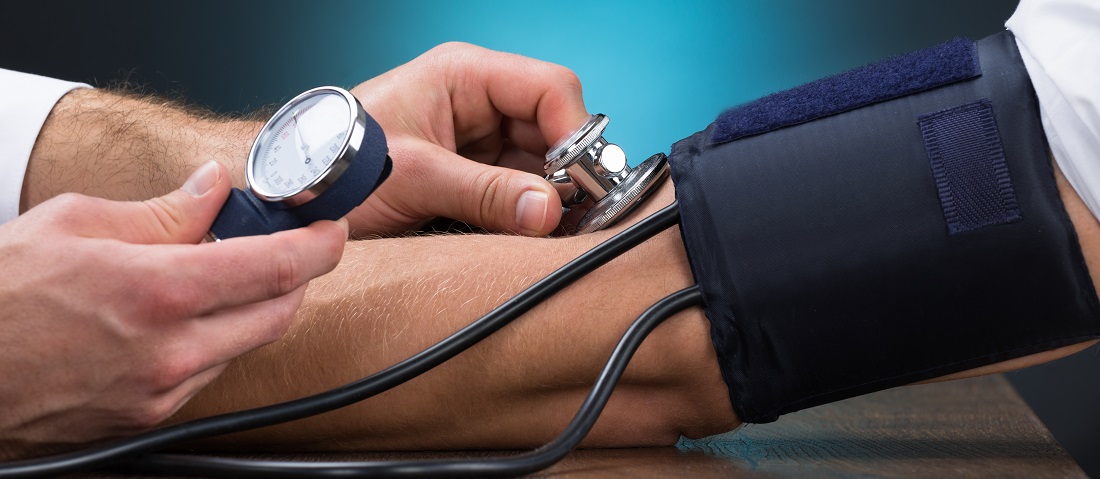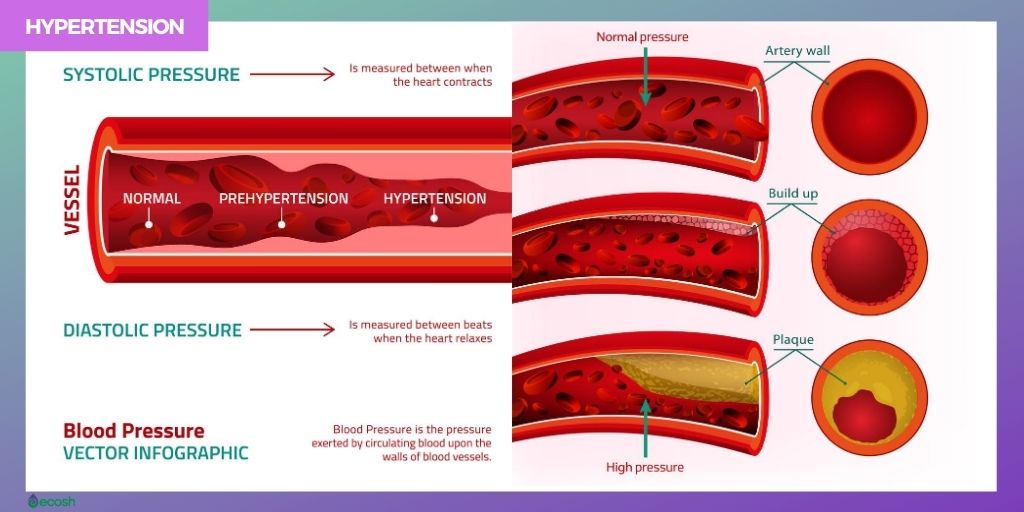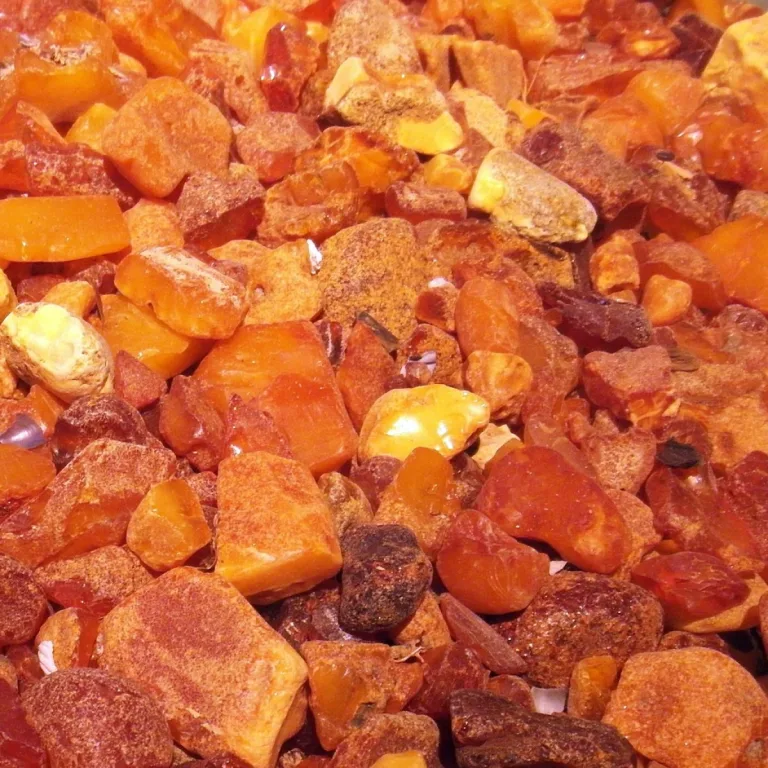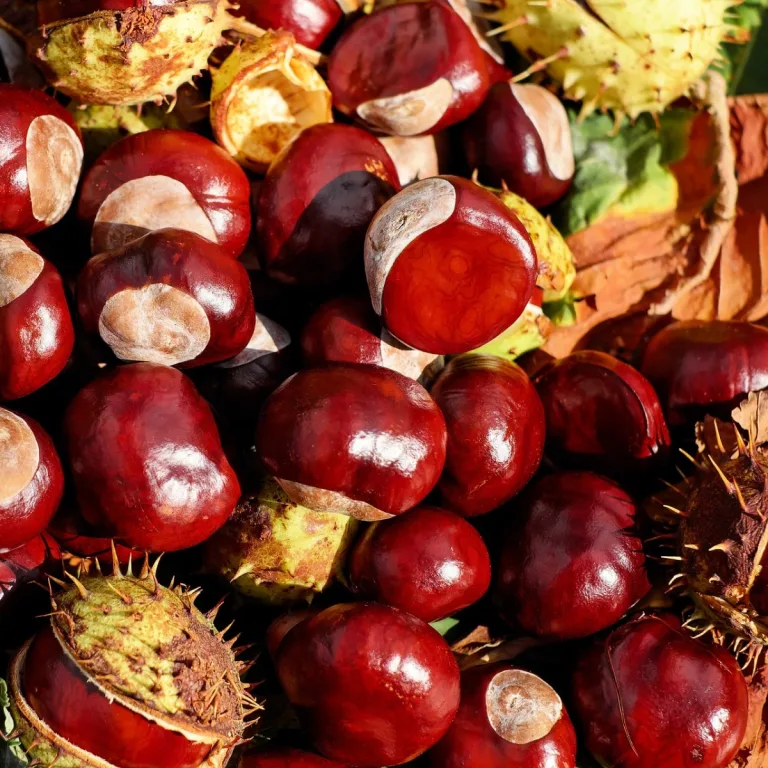Hypertension (HTN or HT) is a high blood pressure (HBP), or blood pressure that is higher than normal. It is a long-term health condition in which the blood pressure in the blood vessels is continually elevated. Therefore, to diagnose hypertension, you should firstly measure your blood pressure, as these values reveal the volume of blood pumped into the bloodstream by the heart and the tone of blood vessels. In other words, they literally show how hard your blood is pushing against the sides of your blood vessels (arteries) as it travels around your body.
- The first, or upper number, systolic blood pressure, shows the force your heart exerts on the walls of your blood vessels each time it beats.
- The second, or lower number, diastolic blood pressure, shows the force your heart exerts on the walls of your blood vessels in between beats – during the relaxation phase.
Therefore, as it changes over time, blood pressure is not static but is directly affected by external factors such as activity levels but also by physiological changes such as diseases. Blood pressure gives an idea of your health.
<120/80 mm Hg is considered optimal and high blood pressure officially starts from >140/99, from which it is classified as stage 1 hypertension. However, the line between normal and high blood pressure is conventional and is often influenced by the individual’s characteristics. For example, more recent guidelines define hypertension as already over 120/80 mm Hg.
Moreover, the balance of the blood pressure is an important factor without which circulatory disorders would occur, which means not enough blood will reach certain organ systems.

Blood Pressure – How to Measure?
- Blood pressure is measured with a sphygmomanometer, which can be either manual or automatic. The first is more common among medical professionals because it requires more skills. However, both measuring instruments have certain rules of use that should be followed in order to obtain a true result. In this case, we focus on the automatic device.
- The blood pressure monitor must be calibrated and the cuff must be in the correct size, i.e. cover 2/3 of the upper arm. The cuff must also be on the same line with the heart, in the right place (the artery mark on the cuff) and no clothes should be left under it.
- Before measuring, you should sit or lie down for a few minutes and avoid stressful situations, physical exertion, smoking and drinking coffee about half an hour before.
- Measure your blood pressure twice at intervals of a few minutes and, if the results differ greatly, repeat the measurement with your other hand, for example. However, preference should be given to the hand from which the higher values were obtained.
- Blood pressure changes over time, e.g. is lower at night and higher during exercise. For daily measurements, a specific time should be preferred in order to generate a reference moment.
- Record your blood pressure as well as your heart rate on a daily basis so that you can get a better overview of the average readings and react accordingly if necessary.
- However, inaccurate measurements may be obtained in people with arrhythmias.
- In addition, if necessary, have the GP nurse teach you the correct measurement method.

High Blood Pressure (HBP) – Hypertension (HTN or HT) Diagnosis
Hypertension is a high blood pressure, or blood pressure that is higher than normal. In fact, high blood pressure and the dangers that come with it already start when the blood pressure is above optimal or normal levels. Hypertension as a disease is officially classified as> 140/99 mm Hg.
Blood pressure categories according to The American college of Cardiology:
- Normal blood pressure. SBP <120 mm Hg and DBP <80 mm Hg.
- Your blood pressure is optimal or normal if it’s below 120/80 mm Hg.
- Elevated blood pressure. SBP 120-129 mm Hg and DBP <80 mm Hg.
- Elevated blood pressure is a systolic pressure ranging from 120 to 129 mm Hg and a diastolic pressure below 80 mm Hg. Elevated blood pressure tends to get worse over time unless steps are taken to control blood pressure.
- Hypertension
- Stage 1 – SBP 130-139 mm Hg or DBP 80-89 mm Hg. You suffer from stage 1 hypertension, if your systolic pressure is ranging from 130 to 139 mm Hg or a diastolic pressure is ranging from 80 to 89 mm Hg.
- Stage 2 – SBP >=140mm Hg or DBP >=90mm Hg. More severe hypertension, stage 2 hypertension is a systolic pressure of 140 mm Hg or higher or a diastolic pressure of 90 mm Hg or higher. (1, 2)
Hypertension stages according to NICE:
- Stage 1 hypertension. Clinic blood pressure ranging from 140/90 mmHg to 159/99 mmHg and subsequent ABPM daytime average or HBPM average blood pressure ranging from 135/85 mmHg to 149/94 mmHg.
- Stage 2 hypertension. Clinic blood pressure of 160/100 mmHg or higher but less than 180/120 mmHg and subsequent ABPM daytime average or HBPM average blood pressure of 150/95 mmHg or higher.
- Stage 3 or severe hypertension. Clinic systolic blood pressure of 180 mmHg or higher or clinic diastolic blood pressure of 120 mmHg or higher. Stage 3 is also called a hypertensive crisis or a similar condition. (2)
In most cases, hypertensive crisis has the same symptoms as high blood pressure, but the symptoms are exacerbated, such as headache or tightness in the head, tiredness, weakness, imbalance and palpitations.
In general, a third of people do not know that they have high blood pressure, because it may not immediately reveal itself. Blood pressure can rise at a slow but steady rate, and a person gets used to the accompanying physiological symptoms until it damages organ systems such as the kidneys, eyes, cardiovascular and cerebrovascular system.
High blood pressure, being a disease in itself, is in fact a symptom. As it is mainly a sign of deteriorating cardiovascular condition and is a major risk factor for hemorrhagic stroke.

High Blood Pressure – Hypertension Risk Factors
The main risk factors are:
- Low physical activity
- Obesity and increased waist circumference (visceral fat)
- Unhealthy diets such as excessive consumption of animal fats and salts
- Smoking and alcohol abuse
- High cholesterol and blood sugar levels
- Excessive chronic stress
- The risk factor that we unfortunately cannot influence is age. As it grows, so does the blood pressure and heredity or the genetic factor.
High Blood Pressure – Hypertension Symptoms
According to WebMD the symptoms to look out for are:
- Chest pain and irregular heartbeat
- Blood in the urine
- Difficulty breathing
- Severe headaches
- Tightness in the head
- Nosebleed
- Fatigue or confusion
- Vision problems
- Pounding in your ears, chest or neck
Other symptoms that may be related to high blood pressure:
- Blood spots in eyes
- Dizziness
- Facial flushing
- Nervousness
- Sweating
- Trouble sleeping (3)
High Blood Pressure and Hypertension Home Treatment – High Blood Pressure Diet and 12 Supplements for High Blood Pressure
Along with conventional treatment, by starting a few new food habits you may be able to lower your blood pressure and reduce the medications you need to control high blood pressure.
For example, whole fruits and vegetables that are low in sodium (salt), and contain magnesium, potassium and fiber may help control and balance your blood pressure
In addition, seeds, nuts, legumes, lean meats, and poultry are also good source of magnesium. Juices are less helpful, as they contain less fiber, so it would be better to pick whole fruits (6).
High Blood Pressure Diet
Avoid
- Salt (Sodium). In fact, a high-salt diet increases blood pressure (5). Therefore, to lower the salt in your diet, aim for less than 2,300 milligrams (about 1 teaspoon of salt) each day (6). Ask your doctor if you should go even lower, for example 1,500 milligrams. Read the nutritional facts label on every food package and elect foods that have 5% or less of the “Daily Value” of sodium.
- Canned foods, processed foods, lunch meats, and fast foods, as these may contain too much of hidden salt.
- Alcohol can increase your blood pressure as well, so try to minimize your alcohol consumption.
Eat
According to WebMD, to lower your blood pressure and increase the amounts of natural potassium, magnesium, and fiber you consume, you should eat more:
- A – apples, apricots
- B – bananas, beet greens, broccoli
- C – carrots, collards
- D – dates
- G – green beans, grapes, green peas, garlic
- K – kale
- L – lima beans, legumes, lean meats
- M – mangoes, melons
- N – nuts
- O – oranges
- P – peaches, pineapples, potatoes, pomegranates, poultry
- R – raisins
- S – spinach, squash, strawberries, sweet potatoes, seeds
- T – tangerines, tomatoes, tuna
- Y – yogurt (fat-free)
- In addition, use salt-free seasonings.
Food Supplements for High Blood Pressure
According to studies, natural dietary supplements might be a promising way to balance high blood pressure. But some supplements will interact with blood pressure medications, such as ACE inhibitors and beta-blockers. Here are some supplements that according to Healthline, may help lower your blood pressure.
However, if you’re already on blood pressure medications, speak with your doctor about possible interactions and toxicity warnings before you try a supplement.
1. Magnesium
The good news is, that magnesium supplements may truly help you, because one study found that magnesium supplementation appeared to achieve a small but clinically significant reduction in blood pressure (10).
2. Potassium
According to an other study, patients with elevated blood pressure may also benefit from increased potassium intake along with controlled or decreased sodium intake (11).
3. Folic acid
In addition, based upon studies used in one meta-analysis, supplementation with at least 5000 μg/d of folic acid, for a minimum of 6 weeks, can slightly lower systolic blood pressure. However, the real clinical benefit is achieved through improved endothelial function (8).
4. Vitamin D
Moreover, according to one study, low levels of vitamin D are associated with risk of developing hypertension (9).
5. CoQ10
Also coenzyme Q10 may help you, as one study concluded that it has the potential in hypertensive patients to lower systolic blood pressure by up to 17 mm Hg and diastolic blood pressure by up to 10 mm Hg without significant side effects (12).
6. Fiber
Moreover, according to a study, increasing the intake of fiber in Western populations, where intake is far below recommended levels, may contribute to the prevention of hypertension (13).
7. Acetyl-L-carnitine
According to one small study, Acetyl-l-carnitine safely ameliorated arterial hypertension, insulin resistance, impaired glucose tolerance, and hypoadiponectinemia in subjects at increased cardiovascular risk. Therefore, whether these effects may translate into long-term cardioprotection is worth investigating (14).
8. Garlic
Studies suggest that garlic is an effective and safe approach for hypertension (15). However, if you can handle it`s bitter taste, you probably don`t need supplements to consume garlic.
9. Melatonin
Interestingly, researchers have also found that taking melatonin supplements reduces night blood pressure in patients with nocturnal hypertension (16).
10. Omega-3
Moreover, one review of literature about omega-3s and blood pressure suggested that Omega-3 polyunsaturated fatty acids (PUFAs) from fish and fish oils are able to slightly, but significantly improve arterial hypertension (17).
11. French maritime bark extract
In addition, one small study concluded that after 12 weeks of supplementation, Pycnogenol (which is derived from French maritime bark) resulted in improved diabetes control, lowered cardiovascular (CVD), and reduced antihypertensive medicine use (18).
12. Anthocyanins
Anthocyanins are purple, red, or blue pigments found in for example blueberries, cherries, pomegranates, and other antioxidant-rich fruits or vegetables. In conclusion, the results of one study suggested that pomegranate juice (PJ) consumption by patients with carotid artery stenosis decreases common carotid intima-media thickness and systolic blood pressure after one year, and these effects could be related to the potent antioxidant characteristics of PJ polyphenols (19).

Blood Pressure – Prevention and Control
Above all, high blood pressure usually indicates an increased risk of cardiovascular disease. Therefore, to reduce the risk of heart attacks and strokes, it is very important to keep your blood pressure within the normal range. By reducing the risk factors for high blood pressure, you can also have a positive effect on blood pressure by keeping it stably in the normal range.
So, to prevent high blood pressure, you should start checking it more regularly if you are over 40 years old, have close relatives with high blood pressure, have a history of high blood pressure or have had a high blood pressure.
Cultivating a healthy lifestyle is the main thing you can do yourself to improve your overall health and thus keep your blood pressure stable at normal values for longer. In conclusion, as this indicator may inevitably increase with age, it is important to visit your doctor regularly, who will prescribe medicines that affect your blood pressure if necessary.
NB! The information provided here is for informational purposes only and should not be construed as health care or medical diagnosis and treatment. This information should not be construed as a guarantee of the results to be achieved. In addition, this information is not intended to replace the advice of your physician or other healthcare professional.
Even more, you should not use it to diagnose or treat a health problem. Before changing or discontinuing your existing medication, treatment, or care, or taking any dietary supplements, be sure to consult with your healthcare professional or doctor before starting any diet or program, or if you suspect you may have a medical condition.
Compiled by Maria-Helena Loik
Pictures: Pexels.com, Pixabay.com, Shutterstock.com
Sources:
- https://www.mayoclinic.org/diseases-conditions/high-blood-pressure/diagnosis-treatment/drc-20373417
- https://gpnotebook.com/simplepage.cfm?ID=x20040318171757418550
- https://www.webmd.com/hypertension-high-blood-pressure/guide/hypertension-symptoms-high-blood-pressure
- http://guidance.nice.org.uk/NICE (August 2019). Clinical management of primary hypertension in adults,
- https://www.sciencedirect.com/topics/biochemistry-genetics-and-molecular-biology/high-salt-diet
- https://www.webmd.com/hypertension-high-blood-pressure/high-blood-pressure-diet#1
- https://www.healthline.com/health/high-blood-pressure-hypertension/supplements-to-lower-blood-pressure
- https://www.ncbi.nlm.nih.gov/pmc/articles/PMC2697578/
- https://www.ncbi.nlm.nih.gov/pmc/articles/PMC2747298/
- https://www.nature.com/articles/ejcn20124
- https://insights.ovid.com/crossref?an=00004872-201508000-00003
- https://www.nature.com/articles/1002138
- https://jamanetwork.com/journals/jamainternalmedicine/fullarticle/486375
- https://www.ahajournals.org/doi/10.1161/HYPERTENSIONAHA.109.132522
- https://pubmed.ncbi.nlm.nih.gov/25837272/
- https://pubmed.ncbi.nlm.nih.gov/17000226/
- https://pubmed.ncbi.nlm.nih.gov/19601857/
- https://www.sciencedirect.com/science/article/pii/S0271531708000602?via%3Dihub
- https://www.clinicalnutritionjournal.com/article/S0261-5614(03)00213-9/fulltext


